In the 70’s, only a few artists were using the streets as way to reach out to people, communicate and ultimately make art. Accompanied by Don Leicht, his long time collaborator, John Fekner brought art and help to areas in New York that were in need at the time. “Decay/Abandoned” , “Wheels Over Indian Trails”,”Post no bills, Post no dreams”, etc were only some of the hundreds of messages John spray painted all over New York. What some might have called vandalism, some others saw as a welcoming statement, and some others saw as a sign that things needed to get fixed in the city.
I have to say, having the chance to interview John Fekner was truly an honor. I hope you enjoy the interview as much as I did. This interview an excerpt from the exhibition catalog of the upcoming exhibition, PANTHEON: A history of art from the streets from New York City. Please support their Kickstarter, they only have a few days left to reach their goal.
To find out more about John Fekner, please visit his website (lots of cool stuff in there).
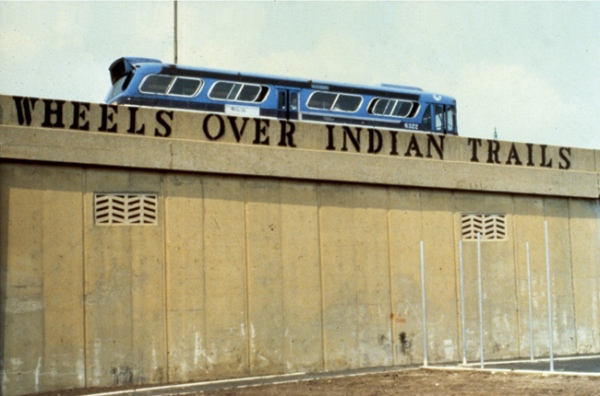
I know you have lived in New York your whole life, and started to do public art back in 1968. What drove you to make art in public areas?
I was a city kid, as soon as I stepped outside it was hard: concrete, asphalt, jackhammers, traffic lights. Long Island City factories were a few blocks away. Summer was handball, winter was roller hockey, and so on. Always in the street-Sunnyside, Woodside, Jackson Heights. The first outdoor text was in the Heights, where I hung out as a teenager in 60s. At seventeen, with few friends I hung over the roof of the park house and on the front we painted the phrase Itchycoo Park in two-foot letters.
What about living in New York influenced your work?
The soot belching out of apartment rooftops, chimneys, diesel engines and the smell of jet fuel near La Guardia—a love/hate with industry and technology.
You and Don Leicht have been collaborating for years. How and When did you and Don meet?
We met in graduate school in the Bronx in 1973. The first crit class we had we both showed up with invisible work-mine were portraits and his were abstract narratives. Everyone in the class was stunned- they couldn’t see anything…so we really hit it off…fellow Libras-born in October.
When did you both decide to start collaborating in art?
When we shared a studio at P.S. 1. In 76. We were both placing hidden artwork and drawing on the walls in and around the building.
What is it about collaborative work that you enjoy the most?
Collaboration is the closest I get to working in a band setting. With Don, ideas are exchanged, the visual journey take twists and turns and ultimately you make a combined image that works. Sometimes he plays lead, sometimes I take over at some point. The finish painting is a blend of both of us…it isn’t about he painted this and I said that. Sometimes it completely opposite from what it appears to be. It’s like a lyricist and a piano player. Sometimes the words comes first, sometimes the music or vice-versa. You play off each other’s input.
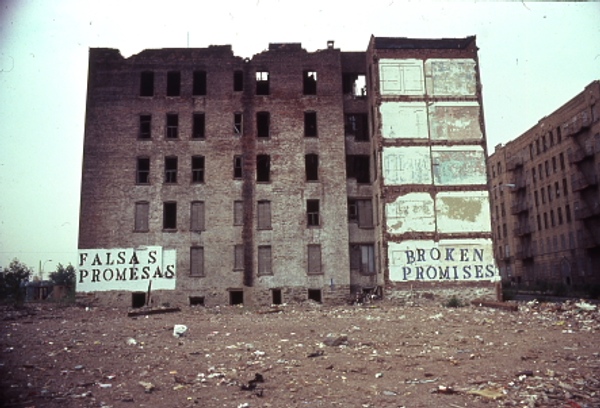
The Warning Signs project brought attention to areas and communities in need of help at the time. Could you tell me a little about this project and how it helped you develop into the artist that you are now?
I was paying a lot of attention to my immediate environment and questioning why something was broken and not being repaired. I tried to emphasis the problem that other people blocked out of their vision-I made it more visible. Issues pertaining to the human condition and the environmental are still as important to address and are in newer works, whether it’s a video or a series of paintings.
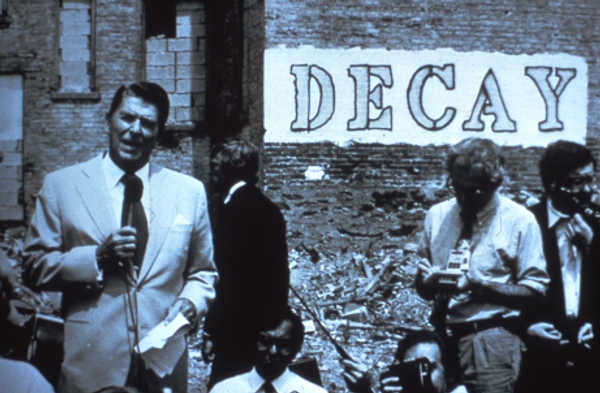
When researching about your work I found out that you studied poetry as a teenager. How does poetry influence your work?
Poetry is like life- you are in moment and then it’s gone. A brief reflection on life-one instantaneous boom-and you move on..a few seconds of a lifetime captured in a few words.
What inspires John Fekner?
Discovering or unearthing something that strikes an immediate chord and compels me enough to immediately react and create something new in the appropriate media.
Your favorite place in NYC?
Listening for that eternal echo under the Sunnyside viaduct: http://www.flickr.com/photos/41101207@N00/2195426639 And any street in NY that still has cobblestones; reminds me of family and friends who are no longer here. And walk those streets on a holiday morning very early when no one is around…it feels like Edward Hopper will walk right by you..
You usually work with stencils and metal, why stencils? And why metal?
Stencils have that official proclamation thing going on… Don’t Touch – Don’t Enter built into it. Metal has an industrial aura and is a reflection of our environmental destruction filled with the other culprits: plastic and rubber. It’s so unnatural but is natural to us city dwellers.
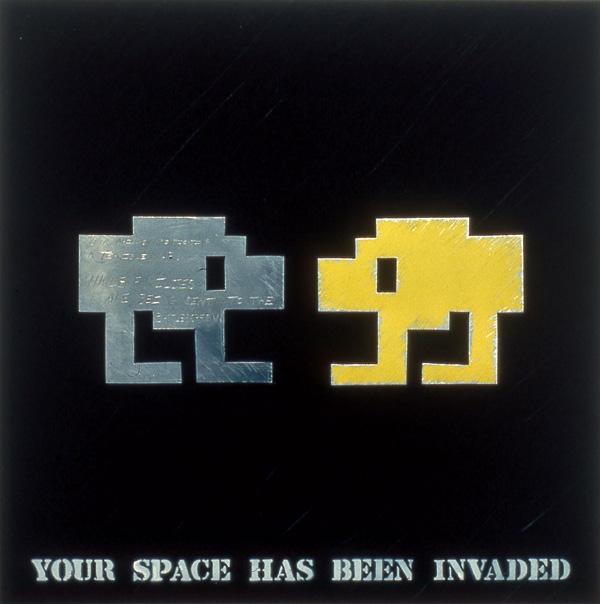
And then there is music and multimedia.How did you ended up working with computer generated work and video?
The idea of using new tools such as audio and video began in the mid-70s with the advent of the Sony portapac camera which was not that portable! DIY was a big thing so having audio/film camera equipment to document the stencils was natural. In 1981, NYU invited Crash, Keith Haring, Warhol and myself to experiment with a new computer and that’s where I created Toxic Wastes From A to Z (coming after you and me).
Hip Hop seemed to be a big influence in your life and art. Would you tell me the role music plays in your life? any last recordings, and your feelings about music back then and now?
Artists like Laurie Anderson, Alan Suicide were all doing art/music at the same time in the 70s. I began recording in my friend’s basement in the late 70s and had audio components as part of my indoor installations. By the winter of 1979 I was spending a lot of time up at Fashion Moda and just picked up on the beats/raps and then made a few records with Bear 167 from the South Bronx. Still like to add musical components on the video pieces. Recently I’ve been listening to some different things like Lower Dens, Animal Collective, Panda Bear, Woodsman, anything that sounds incomplete, like a backing track-I dig that!
How do you feel about the street art scene in New York nowadays?
Street art is the fastest visual conductor out there beating out advertising, guerilla marketing and social media. There is always something different to see somewhere around the world. It’s always the young that bring sometime new to the street, but unfortunately, they don’t stay young for very long. Careerism, branding, promotion-driven projects get in the way of who you really are. Then the next trap, like striving to become part of a gallery’s stable of artists; what am I…a horse? But that’s how the gallery system treats and controls you.
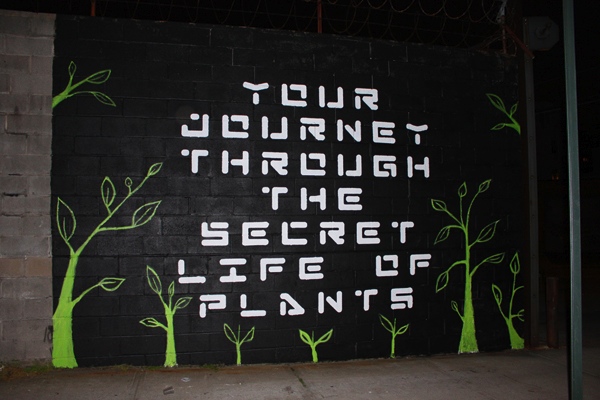
Favorite street artists?
There’s a young kid around the block who works with colored chalk. She absolutely never does the same thing twice. I don’t dare talk to her. I can’t wait for warmer weather to see what she’s up to next. That is the essence of a great street artist. There’s consistency, she will be at the same spot. I’m not a wall-trippin’ round the world guy. Offhand, Stephen Powers Love Letters was very cool. Great connection to the community.
Any new projects coming up?
New paintings with Don Leicht in the studio and there’s my STREAMDROPSTRASSE text work in photo streams http://blkriver.at/ and the ongoing Stanley Cup project plus some hidden projects around as well.
All photos courtesy of John Fekner Research Archive @1979, 1980, 2011
Presidential Candidate Ronald Reagan in South Bronx @AP/Wide World Photos 1980
Your Space Has Been Invaded ©Peter Bellamy 1982
Mother Earth Will Survive Welling Court Mural Photo: Lukwam 2010
